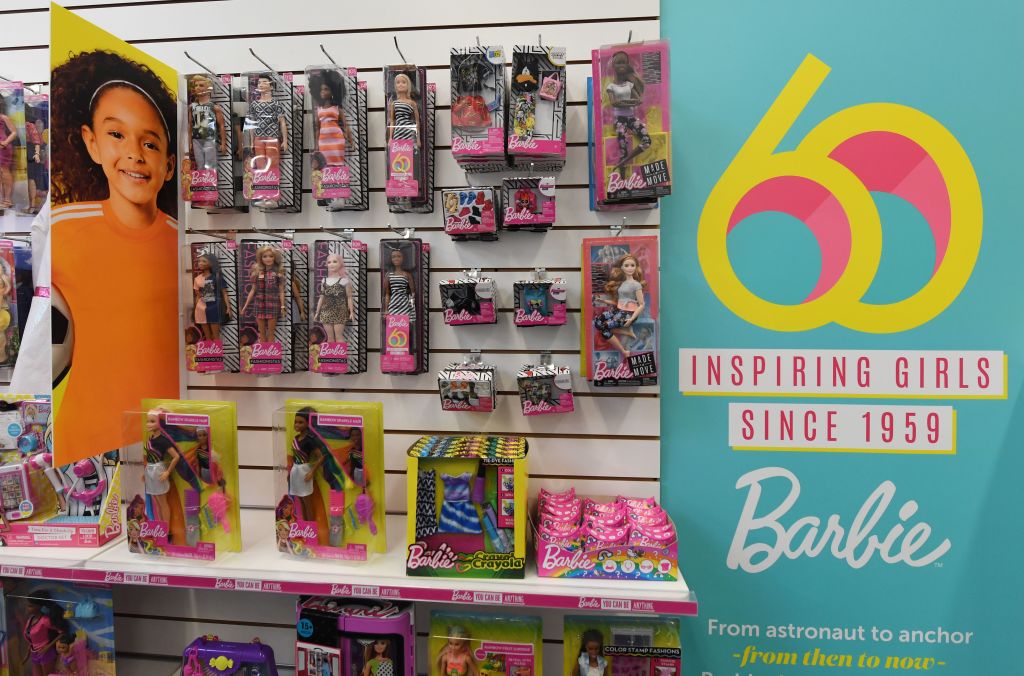
Source: MARK RALSTON / Getty
Mattel has had a long journey creating culturally relevant Black Barbies that children can proudly play with. In recent years, the longstanding toy maker has attempted to course-correct its past biases by adding racial justice-centered dolls to its massive collection.
Mattel is trying to do its part to produce more Black main characters in its Barbie Doll collection. And’s it long overdue.
The first doll by the famous toy maker was launched in 1959, but it wouldn’t be until 1980 that we’d see the first Black Barbie. There were Black ancillary characters – buddies of Barbie, like Christie and Julia (created after Diahann Carroll’s hit show Julia). But there would be over 20 years of Barbie iterations that were all white before Mattel recognized the need for representation.
Even then, the first Black Barbie was really just a white version covered with a darker tint. Mattel hadn’t changed anything else – not the facial features, hair texture or body type. Mattel’s focus on female advancement would be primarily white-based for the next 35 years, with the women who ran for president Barbies and CEO Barbies being almost entirely white. Finally, in 2015, as part of the Sheroes line, we got Black Barbies designed to look like real-life role models, including Ava DuVernay and Gabby Douglas.
The current line of Black Barbies has focused on civil rights, activism and racial justice. While parents continue to explore the best ways to talk to their children about what it means to be Black in America, these dolls can be essential tools in that process. The newest batch includes a freedom fighter, an activist, a protestor and a Black history maker. In 2022 Mattel released the Ida B. Wells Barbie doll, honoring the famous suffragist and former slave.
Playing with dolls is vital to children’s development. Imaginative play helps children develop empathy as they start to think about the feelings and experiences of others. Dolls also allow children to explore their identities and play out scenarios they’d like to see in their lives. However, Black Barbie dolls’ lack – and inadequacy – throughout the years has made these cognitive and developmental benefits less accessible to Black children.
The lack of representation concerning Black dolls also played a role in maintaining bias and stereotyping of Black people, even in the minds of our children.
The doll test was an accurate study of how bias, xenophobia and racism played out due to lack of representation.
The infamous doll test of 1940 (when there were almost no Black dolls), implemented by master psychologists Kenneth and Mamie Clark, reviewed how Black and white children felt about Black versus white dolls. The Clarks’ study surmised that both sets of children preferred white dolls.
An assistant professor, Toni Sturdivant, at Texas A&M University, recreated the study in 2021 and found that the results hadn’t changed much.
Sturdivant’s findings are a testament to the fact that we still have a long ways to go in giving Black children dolls that look like them, that they can also feel proud to identify with.
And representation matters – a lot.
As Ebony Oliphant, who grew up around mainly white people, told Huffington Post, her mother made a solid effort to give her Black dolls growing up, resulting in her having “main character energy” in her life.
“Playing with my Black Barbies in the ’90s allowed me to feel proud in my skin as I imagined myself in Barbie’s ‘career’ and having the lifestyle that I created for her,” Oliphant explained. “I didn’t grow up seeing Black women in my community as my doctor, dentist, business executive, but Barbie could do all that.”









